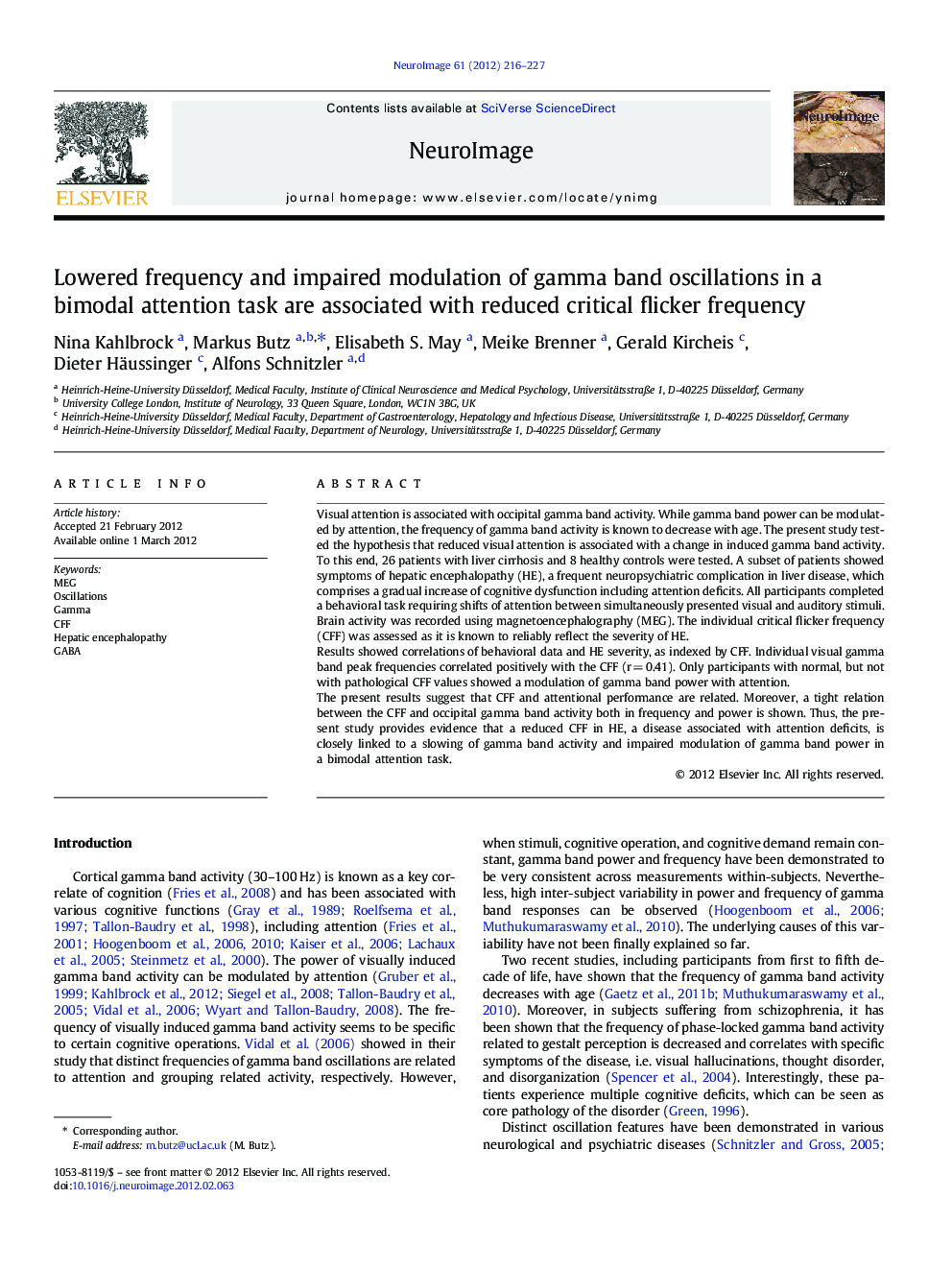| Article ID | Journal | Published Year | Pages | File Type |
|---|---|---|---|---|
| 6030279 | NeuroImage | 2012 | 12 Pages |
Visual attention is associated with occipital gamma band activity. While gamma band power can be modulated by attention, the frequency of gamma band activity is known to decrease with age. The present study tested the hypothesis that reduced visual attention is associated with a change in induced gamma band activity.To this end, 26 patients with liver cirrhosis and 8 healthy controls were tested. A subset of patients showed symptoms of hepatic encephalopathy (HE), a frequent neuropsychiatric complication in liver disease, which comprises a gradual increase of cognitive dysfunction including attention deficits. All participants completed a behavioral task requiring shifts of attention between simultaneously presented visual and auditory stimuli. Brain activity was recorded using magnetoencephalography (MEG). The individual critical flicker frequency (CFF) was assessed as it is known to reliably reflect the severity of HE.Results showed correlations of behavioral data and HE severity, as indexed by CFF. Individual visual gamma band peak frequencies correlated positively with the CFF (r = 0.41). Only participants with normal, but not with pathological CFF values showed a modulation of gamma band power with attention.The present results suggest that CFF and attentional performance are related. Moreover, a tight relation between the CFF and occipital gamma band activity both in frequency and power is shown. Thus, the present study provides evidence that a reduced CFF in HE, a disease associated with attention deficits, is closely linked to a slowing of gamma band activity and impaired modulation of gamma band power in a bimodal attention task.
